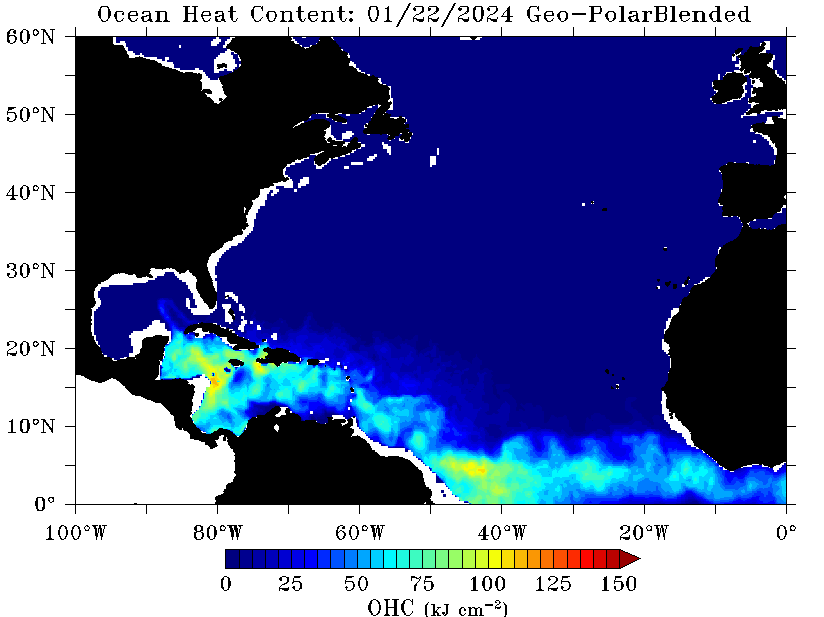Jacksonville, Fl. — The “Buresh Bottom Line”: Always be prepared!.....First Alert Hurricane Preparation Guide... City of Jacksonville Preparedness Guide... Georgia Hurricane Guide.
STAY INFORMED: Get the * FREE * First Alert Weather app
FREE NEWS UPDATES, ALERTS: Action News Jax app for Apple | For Android
WATCH “Preparing for the Storm”
WATCH “The Ins & Outs of Hurricane Season”
READ the First Alert Hurricane Center “Survival Guide”
LISTEN & WATCH “Surviving the Storm” - WOKV Radio & Action News Jax
***** ALWAYS CHECK & RE-CHECK THE LATEST FORECAST & UPDATES! *****
REMEMBER WHEN A TROPICAL STORM OR HURRICANE IS APPROACHING: Taping windows is *not* recommended & will not keep glass from breaking. Instead close curtains & blinds.
Realize the forecast cone (”cone of uncertainty”) is the average forecast error over a given time - out to 5 days - & *does not* indicate the width of the storm &/or where damage that might occur.
*** LOCAL (Jacksonville/NE Fl./SE Ga.) IMPACTS FROM THE TROPICS: None. We will continue to have rough seas & surf this week due to strong, persistent onshore flow causing some minor to moderate flooding at times of high tide along the coast, intracoastal, St. Johns River & its tributaries.
The Atlantic Basin Overview:
** Tropical depression #17 formed over the Eastern Atlantic a week ago Sat. morning & was upgraded to tropical storm “Philippe” late in the afternoon...
** A strong tropical wave is moving off the coast of Africa with some potential for gradual development...

Philippe’s poorly defined center will likely jump around some as convection waxes & wanes. Forecast models are struggling with the movement & intensity of Philippe but the tropical cyclone has been very resilient considering the virtually nonstop moderate to strong shear. Philippe should turn rather sharply northward through midweek as Philippe reaches the western edge of the Bermuda high which is well to the east ... helped out by a strong approaching upper level trough from the west (which will drive a strong cold front deep into the Gulf & Western Atlantic this weekend) allowing for improving weather conditions over the Northern Lesser Antilles & Easter Greater Antilles. There will continue to be heavy rain & rough seas & surf for some of the most northeast Caribbean islands in particular but also farther south along the Windward Islands due to how lopsided Philippe is. Most of the squalls are over the eastern & southeast part of the circulation which should keep the heaviest rain & strongest winds east of Puerto Rico.
Philippe will have some impacts on Bermuda by Thu./Fri. and possibly the far Northeast U.S., Newfoundland & Nova Scotia by late in the upcoming weekend.






(2) A strong tropical wave - ‘91-L’ came off the coast of Africa a week ago this past weekend was upgraded to tropical cyclone - “Rina” Thu. morning. As the 18th named storm of the season, 2023 now only ranks behind 2020 & the 2021 as the most named Atlantic storms through Sept. 28th. Rina became post-tropical late Sunday over the Central Atlantic & will accelerate north/northeast as the remnants are picked up by an upper level trough & surface cold front.

Check out the upper oceanic heat content (UOHC) [tropical cyclone heat potential/TCHP] across the SW Atlantic, Gulf & Caribbean. The warmth is very deep. But keep in mind warm ocean temps. alone doesn’t necessarily equate to a “big” hurricane season (need other ingredients & factors to be favorable too) but it’s obvious there is a lot of very warm water at great depths over the Caribbean & Gulf of Mexico stretching eastward all the way into the Central Atlantic:




Water vapor loop (dark blue/yellow is dry mid & upper level air):


October tropical cyclone origins:
Averages below based on climatology for the Atlantic Basin for October:

Wind shear:




Saharan dust spreads west each year from Africa by the prevailing winds (from east to west over the Atlantic). Dry air - yellow/orange/red/pink. Widespread dust is indicative of dry air that can impede the development of tropical cyclones. However, sometimes “wanna’ be” waves will just wait until they get to the other side of - or away from - the plume then try to develop if other conditions are favorable. In my personal opinion, way too much is made about the presence of Saharan dust & how it relates to tropical cyclones. In any case, the peak of Saharan dust typically is in June & July.

2023 names..... “Sean” is the next name on the Atlantic list (names are picked at random by the World Meteorological Organization... repeat every 6 years). Historic storms are retired [Florence & Michael in ’18... Dorian in ’19 & Laura, Eta & Iota in ‘20, Ida in ‘21 & Fiona & Ian in ‘22]). In fact, this year’s list of names is rather infamous with “Katrina”, “Rita” & “Wilma” retired from the ‘05 list & “Harvey”, “Irma”,“Maria” & “Nate” from the ‘17 list. The WMO decided - beginning in 2021 - that the Greek alphabet will be no longer used & instead there will be a supplemental list of names if the first list is exhausted (has only happened three times - 2005, 2020 & 2021). The naming of tropical cyclones began on a consistent basis in 1953. More on the history of naming tropical cyclones * here *.





East Atlantic:





Mid & upper level wind shear (enemy of tropical cyclones) analysis (CIMMS). The red lines indicate strong shear:
Water vapor imagery (dark blue indicates dry air):

Deep oceanic heat content over the Gulf, Caribbean & deep tropical Atlantic. The brighter colors are expanding dramatically as we near the peak of the hurricane season.:

Sea surface temp. anomalies:


SE U.S. surface map:

Surface analysis centered on the tropical Atlantic:

Surface analysis of the Gulf:

Caribbean:

Atlantic Basin wave period forecast for 24, 48, 72 & 96 hours respectively:




East/Central Pacific:
Lidia:






West Pacific:
“Koinu” - forecast to impact Taiwan by late this week:


Global tropical activity:



Cox Media Group





